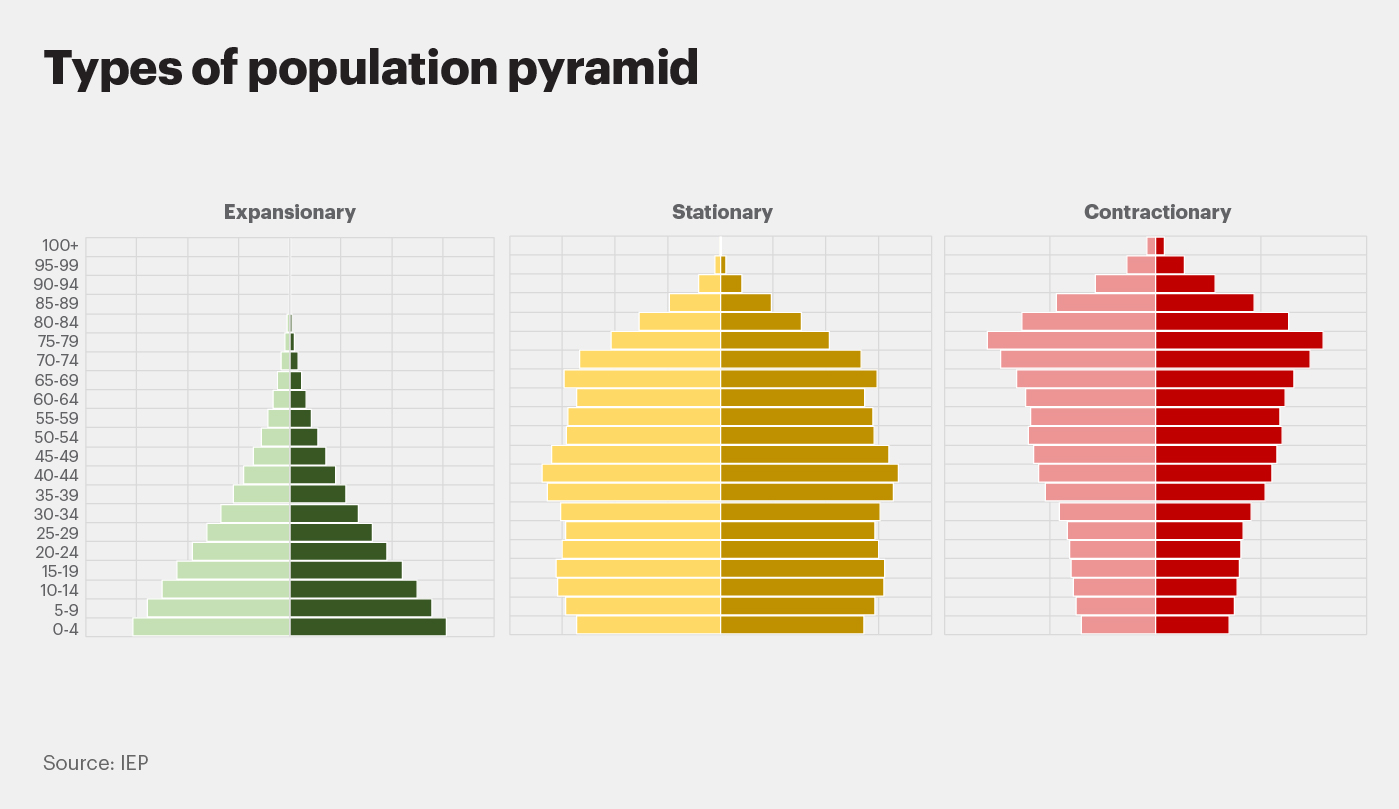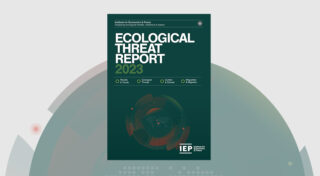In 2030, young people in Africa are projected to make up 42% of global youth, and more than 60% of Africa’s population is under the age of 25. Sub-Saharan Africa is especially the hotspot of growing birth rates. This demographic trend plays a pivotal role in policy formulation and research, shedding light on the societal implications of a sizable youth population. Most have accounted the rise of conflict and terrorism with a large youth bulge, often exacerbated by issues such as youth unemployment. The lack of opportunities compels many of the youth to seek alternative means of income, leading some to join rebel movements. There is a strong connection between increasing population and environmental degradation especially in urban areas where infrastructure is not able to keep up with it. The figure below depicts the trend of low-peace countries as also the site of population increases.

The Ecological Threat Report (ETR) defines the youth bulge as a large increase in the youthful percentage of a population relative to its elder percentage. A larger youth bulge is associated with an elevated likelihood of conflict and heightened political activism among the youth. Moreover, youth bulges frequently coincide with higher rates of youth unemployment compared to their adult counterparts.
A common way to examine the youth bulge is to look at its population pyramid, which shows the percentage of the population by five-year age groupings. Population pyramids can be categorised into three main types:

Sub-Saharan Africa will be the only region with a clearly expansionary population pyramid. Findings show that the growth in the total number of young people in sub-Saharan Africa is so large that over the next two decades, the number of people aged 15 or under will be greater than the entire population of Europe. Although the total number of young people in sub-Saharan Africa is expected to surge over the next three decades, relative to the overall population in the region the youth bulge as a percentage of total population will fall. This trend began 25 years ago and has been declining steadily ever since.
For example, Niger is estimated to record a population growth rate of 146% by 2050, the highest rate of any country. The level of population growth in Niger will outpace economic development which will lead to declining living standards and competition for economic resources.
As a result of soaring population, 31 million Africans live outside of their birth country, with the majority living somewhere on the continent. Many millions more are internally displaced.

Research findings in the ETR highlight the necessity for policies that empower local communities to address context-specific challenges effectively. By harnessing the expert knowledge of the local environment, bottom-up approaches do better in aiding communities so they can withstand ecological threats. Numerous policy recommendations and development plans are in existence to improve the issues in sub-Saharan Africa.
The ETR proposes various solutions, such as the construction of a sand dam in Kenya to alleviate water scarcity, and implementing food-yielding programs to teach local communities how to optimise their economic output and enhance food availability.
Notably, Nigeria, only the second country after Finland, adopted the United Nations Security Council (UNSC)’s advocacy for youth empowerment. They are employing the five key pillars for action to support and sustain the needs of the youth.
The African Union (AU) has also formulated policies concentrating on youth development, integrating the UNSC’s ‘Youth, Peace, and Security’ resolution to address the youth’s specific needs. In Africa, the youth often find themselves victims of conflict while being the biggest advocates in promoting peace. Certain groups aspire to end violence and struggles on the continent, emphasising the importance of targeted projects and donations from major stakeholders and investors to foster inclusivity and cater to the diverse needs of the youth.

Download the Ecological Threat Report 2023
Ecological Threat Report 2023